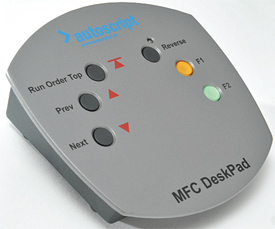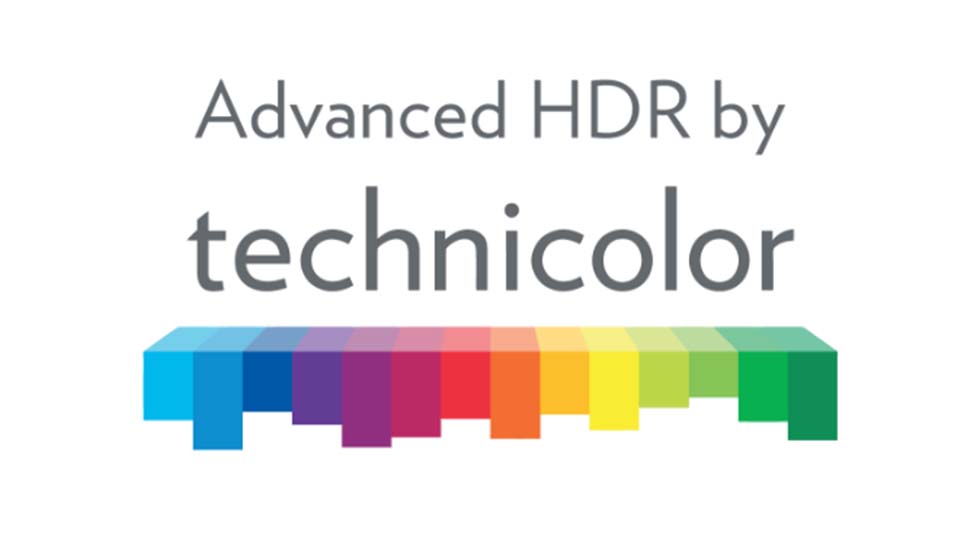Do-it-yourself Prompting
SEATTLE
A mid-October article in "The Washington Post" Style section became the shot heard throughout television. A memo from the news director at Washington D.C.'s Fox owned-and-operated affiliate WTTG announced to its news department that, as a corporate cost-cutting mandate, on-air anchor talent would control the scrolling of their own teleprompters. The dedicated teleprompter operators would be "reassigned."
Several unnamed WTTG news staff were quoted in the article explaining why large-market newscasters (Washington, D.C. is DMA market 10) are not able to do everything else they do, and control their prompters too. But anchor-prompter control is common in small markets across the United States and in many stations outside U.S. borders.

Prompter People REM FOOT "In India, the Middle East, Southeast Asia and Latin America, where the news presenter is still kind of low man on the totem pole," anchor operation of the prompter is the rule rather than the exception, according to John McGrath, managing director of teleprompter maker Telescript.
HAND AND FOOT
Since anchor prompter operation is nothing new for small market stations, there are self-prompting tools readily available for those larger market stations. First among these is the tactile controller.
"I think the most popular one would be the foot pedal," said Chuck Majewski, U.S. and international sales manager for Prompter People in Campbell, Calif. "Basically it would be out of sight." Prompter People's foot pedal is the REM-FOOT. "You can control speed, control direction, control start and stop." Prompter People also provides a hand controller.

Mirror Image EZ Mouse Raymond Blumenthal, vice president of Listec Video in West Palm Beach, Fla., pointed out that the foot controller doesn't work for all anchors.
"It's like walking and chewing gum at the same time; some people can, some people can't. The most popular thing we find is the ShuttlePro," a hand controller with a rotary knob for scrolling speed control and buttons that facilitate file management and navigation. Listec Video also sells a foot pedal and wireless mouse for prompting control.
J.T. Meidl, president of Mirror Image Teleprompters in Oshkosh, Wis. pointed to the laptop computers that sit as working props on the anchor desk as another source of prompter control. "They can use the mouse module to increase and decrease speed," he said. Mirror Image also offers ShuttlePro and wireless mouse controllers.
Autoscript introduced its new MFC-1 Magno Foot Controller at the 2009 NAB Show and also has wireless and wired hand controllers. Telescript's most popular controller is a 10-button USB control, and also provides a wireless trackball presentation device and a slider that can be built into the anchor desk.
WHO'S IN CHARGE
With a centrally located single teleprompter operator controlling the scrolling, a video feed of the prompter output was all that was needed. But providing prompter control to the newsroom update desk, the rooftop garden, the sports office and so forth means stringing control cables hither and yon.
Or, according to Aaron Brody, QTV's sales manager for the Americas, the station can use their networked controllers, which can plug into any Cat5 jack tied into the station network. QTV has multi-button desk controllers, foot controllers and simple, 2-button hand controllers.
But with any version of multiple controllers, there's the issue of which controller, at any particular point in time, is in control of teleprompter scrolling. Brady detailed three logic modes a teleprompter system can use to decide who's the boss:
- • Every controller has to be at zero before another controller can seize control of scrolling.
- • Any controller which has its scrolling value changed seizes control of scrolling.
- • Whichever controller has the higher scrolling value seizes control.
Brady finds the third mode to be the one most used at stations. "As an anchor, who is finishing reading a script, is slowing down the prompter, the next reader who is speeding up his scrolling assumes control."

Autoscript MFC Desk Pad Regardless of the logic mode used to determine which anchor is controlling the scrolling and what type of controllers are in use, those controllers have to plug in somewhere. There are two options: to provide an external hub which connects the scrolling controllers to the prompting computer, or to incorporate control arbitration into the prompting software itself so that the controllers plug directly into the prompting computer.
"We have control arbitration built into our software," said Telescript's McGrath. Because scrolling controllers plug into USB ports in the prompting computer, the number of controllers that can be employed is essentially unlimited.
One tool that might assist anchors in controlling their own prompters is Autoscript's +Voice-Plus+ voice recognition module for Autoscript's +WinPlus+ prompting software. Using voice recognition technology, +Voice-Plus+ matches the words being read by the anchor to the words in the script to control prompter scrolling.
"The only caveat is that you have to stick to the script," said Gordon Tubbs, vice president of Autoscript in Fairfield, Conn. "If you're going off script to fill time or to skip something, you need to hit the pause button," because otherwise +Voice-Plus+ will be searching for where those ad libs are in the script.
Mirror Image's Meidl predicts some of the larger market anchors will come to like controlling their own prompters. "I talked to one anchor… he said he actually likes prompting himself because if he wants to pause or ad lib, he's in control and not dependent on someone else."
One of the unnamed WTTG reporters quoted in the original Washington Post article wasn't so sure. How a news talent could move around the set and still run his or her own prompter, he noted: "It could be comic, and it could be awful."
But it's unlikely one Monday a station's anchors will show up on the news set to find the prompter operator gone and unfamiliar prompter controllers sitting on the desk. "Most floor directors and producers would be insistent on a tight rehearsal schedule leading up to the implementation of a self-prompting system," said QTV's Brady. The kinds of stumbles the naysayers predict will largely be worked out with the cameras off.
The professional video industry's #1 source for news, trends and product and tech information. Sign up below.
